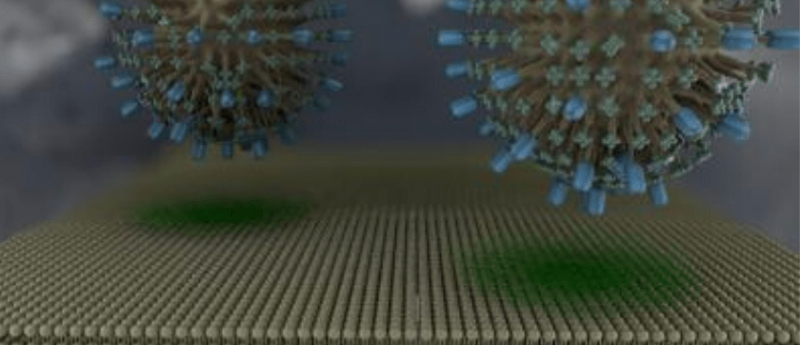Membrane-on-a-chip could be used to safely test COVID-19 drug candidates

‘Membrane-on-a-chip’ technology has been used in medicine in the last few years, mostly to test and monitor treatment strategies. Now, researchers from the University of Cambridge (UK), Cornell University (NY, USA) and Stanford University (CA, USA) have used this technology to develop a human cell membrane-on-a-chip device that could be used to test drug candidates for COVID-19.
The team states that their device can mimic any cell type and can be used to show how COVID-19 attacks human cell membranes and how this activity could be blocked.
The membrane-mimicking devices are formed on chips, with the orientation and functionality of a cell membrane maintained. This was achieved by combining cell membranes with hydrated conducting polymer electrodes and transistors, which provide a more natural environment for monitoring membrane function. This method means that the device does not require live cells that are difficult to keep alive for extended periods of time.
The device has been tested and, as published in two recent studies in Langmuir and ACS Nano, shows success in the monitoring of ion channels, which can be used as drug targets.
“This type of screening is typically done by the pharmaceutical industry with live cells, but our device provides an easier alternative,” explained Róisín Owens from Cambridge University and senior author of the ACS Nano paper. “This method is compatible with high-throughput screening and would reduce the number of false positives making it through into the R&D pipeline.”
The initial aim of the research was to reveal how viruses such as influenza interact with cells, now, further funding has been awarded to the project to test how effective the device is at screening for drug candidates that could be used for treatment of COVID-19.
The membrane could improve the safety of working with viruses, such as SARS-CoV-2, by making virus membranes that are identical to the SARS-CoV-2 virus membrane, but without the viral nucleic acid, and fusing this to the chips. The chips can be used to show which new drugs or antibodies are effective in neutralizing the surface spike proteins found on the SARS-CoV-2 membrane – the culprits for enabling entry into the host cell.
“With this device, we are not exposed to risky working environments for combating SARS-CoV-2. The device will speed up the screening of drug candidates and provide answers to questions about how this virus works,” commented Dr Han-Yuan Liu, researcher at Cornell University and joint first author on both papers.
By creating a safe testing environment and scaling up production of the devices at Stanford University, where they are hoping to automate the integration of the viral membranes and chips using fluidics technology, the team will able to increase detection and testing of new therapeutics for COVID-19.
For more free COVID-19 related content please visit our dedicated COVID-19 Hub on Infectious Diseases Hub here >>>
For more related news from The Nanomed Zone be sure to sign up here >>>